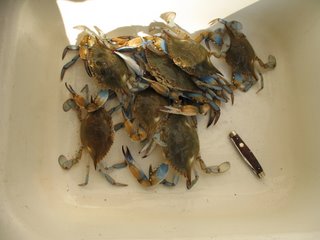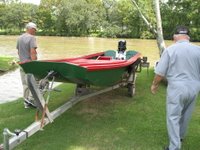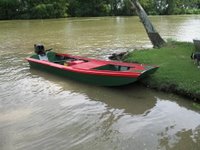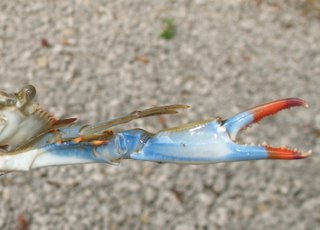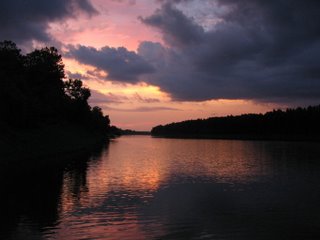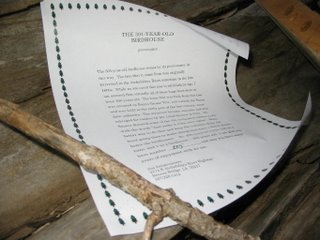I was telling this pretty long story the other day and someone suggested that writing it down would be a good idea. Now that I think about it, I think so too, especially since my friend from Eunice, Willard David, pulled up to the dock this morning to visit for a few minutes. He had just set out some juglines that they use to catch big catfish. He often stops when he sees me down at the dock when they pass. He has a part in this story, and is pictured as he looked this morning.
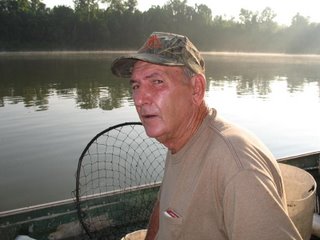
In 2001, knowing that I was going to transition (retire sounds sort of final) out of state agency work within a few years, I needed to find a boat that would be my go anywhere do almost anything boat for the years when I would have time to do almost anything and go almost anywhere. One forgets that decreased physical capacity often accompanies the increased time available, at least one forgets until one tries to act like a young man instead of an old bureaucrat. But that’s not part of this story. I looked for the right boat for several years and finally found the one that met the standards I was looking for. I wanted an aluminum crawfish skiff that was about 17 feet long, four feet wide at the bottom and it had to have a safe curve at the bow. This last was because many times these aluminum skiffs have been the cause of drownings due to design problems. This happens because under certain conditions the bow of these skiffs has a way of diving under the water instead of riding up over it, and throwing the people out of the boat, and then the boat sinks right away. I have had five friends die like this over the last 30 years, in four different accidents, and there have been enough close calls for the survivors to make this information common knowledge among fishermen. But the boats are so useful, and so popular, that most people don’t consider them dangerous, at least not so they admit it.
So, for this reason I wanted to make sure the bow of this boat would not do this diving action, and that’s why it took so long to find the right boat. But we did, in the fall of 2001 I found the boat for sale, in Charenton, along the levee. Not entirely trusting my judgment, I took the boat to two very experienced commercial fishermen, both of whom used these skiffs, and they both pronounced the boat suitable for my intended needs. I won’t say they said it was safe, just as safe as any others like it. Several modifications were made, a second bottom, mainly, and a full dry box across the back for a seat. Once all this was done, I bought a new Yamaha 50 horse motor, manual control, but with a hydraulic lift (in reluctant acknowledgment of looming retirement age), installed it, and bought a new trailer for the boat. For a finishing touch I put in cypress bulkheads and hatch covers, and the boat was ready. On its maiden voyage Carolyn and I took it to the Butte La Rose Canal and spent a wonderful picnic afternoon watching the sunset and enjoying the boat.

[The picture is of Ashley, Kayla and Danielle in the new crawfish skiff.] A few days later, we experienced the annual Camp Delahoussaye, being a week of letting the grandchildren come and see what it’s like to live in the country, along a big river in a big forest. The idea for this is that by exposing these young children to a few days of heat, mosquitoes, smelly fish and the other wonders of being outdoors in Louisiana in the summer, we could counteract the other 51 weeks of playing video games in air conditioned living rooms. Ha. Right. But, we try, or actually, mostly Carolyn tries. I’m too easily defeated by the ennui common in urban grandchildren. At best, I’m a willing boat driver and trotline runner. But here we are at the 2002 grandchild indoctrination session, and I have a brand new boat to show off. So on June 29 we put the boat into the water in the Atchafalaya River and pulled up to load the boat at the floating dock we have behind our house. There were four children and Carolyn and me: Lauren (a niece) 15, Kayla 7, Danielle 9 and Ashley 15. Lauren, the niece, is from Houston, a pretty sophisticated young lady, and early on she informed us that “I don’t do mud”. The rest of the ladies are grandchildren and are from Houston and Austin and were unannounced as to doing mud. We were on the verge of leaving the dock for a ride up the river in the new boat, when Willard, the friend from Eunice, came up the river and stopped alongside for a chat. He makes quite an impression, an older gentleman in blue jeans and an old T-shirt, bare footed, bare headed and usually smoking a cigarette. And as friendly as he can be. His feet look like they would be comfortable walking on almost anything. He looked over into my boat and saw that the young ladies were all sitting on their lifejackets as I had asked them to, except for Kayla who was required to wear hers. Carolyn and I were sitting on ours too. You can’t be too careful. But Willard said, to the kids, “Why don’t yall make an old man happy and put on those life preservers?”. The four of them looked at me and I nodded for them to do it, it just seemed the friendly thing to do, since he had asked. Shortly after, he said goodbye and left to go run his lines.
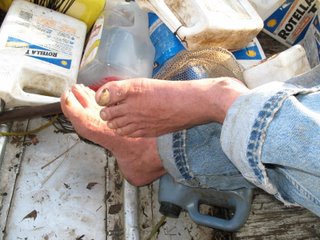
We settled into the boat, two in the front, two on the hatchcovers, and two of us back on the seat near the motor. For the life of me I can’t remember who was sitting where, but I’ll bet they do. Anyway, off we go up the river at about 30 mph, which was about 2/3 throttle for the motor. We crossed under the I10 bridge and continued up the river about a mile, passing occasional camps on the left bank as you go up. After about a mile, I turned around and started back down in the middle of the river. It was getting late (7:30). I never saw what we hit. Very suddenly the motor hit something solid and jerked the handle hard to the left. What happened next was so quick that it was almost like no time passed between the time I felt the motor jerk and then found myself underneath the overturned, and sinking, boat – no memory of it overturning, just dry one moment and wet the next. I came up in an air pocket and could see a light area under me. I guess you must instinctively reach for light because I did and felt the side of the boat and pushed myself under the side and reached the outside of the boat, and the surface. At that point it was still hard to absorb what had happened, but looking around I could see Carolyn holding onto a life jacket, Ashley and Danielle and Lauren were floating in theirs. But no Kayla. Carolyn started yelling for Kayla, and she got about two yells out when Kayla popped up right beside us, also floating in her vest. She was crying that she had lost her shoes, which we didn’t take too seriously, and oddly enough we soon found she hadn’t lost them at all. Taking stock of injuries, we had a couple scrapes, and a few very evident bruises, but no one was seriously injured. Four of us had been thrown clear of the boat and two had been caught underneath – me and Kayla. She tells the same story as I do, she saw light and crawled out from under the boat – not bad for a seven year old.
But, here we are floating down the middle of the Atchafalaya River. The point of the bow has now floated back to the surface, being held up by an air pocket, the motor straight down 16 feet toward the bottom, which is about 35 feet below us. For some reason I’m trying to keep the boat from sinking by holding the bow line. Ashley calls to me “Pop Pop, don’t you want to tie something on the rope?” Oh, yeah, a marker to locate the boat when it sinks, yeah Ashley. Good thinking, where is my brain? She swims to a passing plastic milk jug and throws it to me. I tie it onto the 30-foot bow rope and look around for what to do next. Carolyn has now gathered the chickens and is starting to swim to the wrong bank. I ask her to turn and swim to the right descending bank since that’s where people have camps. Aha, she sees the point and turns, as do the chickens.
The accident has been seen by some people out for a quiet Sunday afternoon at the camp. We saw them sitting in their lawn chairs and barbecue pits on the way up the river, and we waved to them and they waved back, beverage in hand. Now they are trying to keep up with us by running along the bank as we float down with the very considerable current. Problem is, there is not a continuous clean bank; there is a camp with a clean lot, and then a forested lot or two, and then another clean one. So they have to follow the bank and then go up to the road and then back to the river to see where we are. And so on, bless their hearts.
After about what I’m guessing was about a half mile, we managed to get close enough to shore to try for a place to climb out. As we edged closer, Danielle yells out “Pop Pop, an alligator!” And of course, there was one, it was sunning on the bank right where we were going to reach the shoreline. It wasn’t that big, about six feet, and I told Danielle, who had stopped swimming toward the bank, to keep swimming because the alligator wasn’t our biggest problem at the moment. Trooper that she is, she did. And the alligator took one look at six determined humans coming for it with unknown intentions and it hit the water with a splash and we never saw it again.
So we got to the bank and just kind of sat there in the mud for a moment. The river bank at this place is pretty steep, about a 35 degree slope about 40 feet to the top. In our condition this was a pretty good climb. But, the campers to the rescue! Right after we reached land, people showed up at the top of the bank and were looking down at us. One man yelled something like “Wait….!” and jumped down the bank and his momentum was considerable from the start. So considerable that he couldn’t stay upright coming down the bank and he lost his footing and tumbled all the way down and past us and hit the water a good ten feet out in the river. At which point his wife is screaming at us from above “Help him! Help him! He can’t swim!!!” We helped him back to the shoreline, and it became evident that he was one of the ones hoisting beverages earlier. He was very drunk. We saw that he was OK, and we all started to climb the muddy wet slope. Problem was, we were pooped. You had to crawl up the bank, and Carolyn got about ten feet and got stuck even though she was on hands and knees. Behind her was the drunk guy, and I was a few feet away slightly ahead. Picture Carolyn immobile on all fours and behind her is the drunk guy and he realizes she needs help of some kind to get up the bank. The part that is available for him to push isn’t usually the part you touch on a woman you just met. But he looks at her, and looks at his hand, and back at her, and you can see him reach a decision. He reaches forward and pushes – hard. She goes up the bank about four feet. She doesn’t even question how it happened, she turns toward him and says “Do it again!!”. And he does, all the way to the top of the bank. The girls and I manage to get to the top also. There is no more mention from Lauren of “I don’t do mud”. She was covered with it, as each of us was.
At the top there was a small crowd of people and deputies from the St. Martin Parish Sheriff’s Office and an Acadian Ambulance. They checked us all out and no one needed further treatment, not physically anyway. Someone turned on a garden hose and more or less hosed us off. It was then that I noticed that I still had my Pentax binoculars hanging around my neck, coated with mud and sand. Guess what, they really are waterproof. Pretty remarkable. We got a ride home in someone’s pickup truck.
Where do you go to finish a story like this? I guess I’ll just try to include some after-the-fact, but relevant, things. The boat , yes, well, needless to say, we never used it again. After all the precautions I took to make sure the skiff design wouldn’t dive, it did anyway. We salvaged it about a week later using some divers (Ashley’s milk jug was floating as a marker) and a salvage crew from Butte La Rose. I took it to a mechanic in Breaux Bridge and he sold it for me with full disclosure of what had happened. We sold it for the cost of the motor, which had about one hour of running time on it.
Wildlife and Fisheries agents visited us that night about 11:00 pm. They do take these things seriously. They filled out a long report form, interviewing everyone, and they took pictures of the life jackets that we used. After about two hours, they finished what they had to do and they gave the girls T-shirts with the logo “We Were Caught Wearing Our Life Jackets” on them. Four years later, those T-shirts are still worn around here.
Perhaps the most important thing to mention here is a reminder of the part Willard had to play in all of this. If it had not been for him, I would not have had the girls wear the vests. I would have been legal, and they might have been dead. Weeks later, when I saw him again and told him what had happened, he stopped and looked down in his boat and didn’t say anything for a while. Later I learned that he went home and cried. This is not a man who does this, but he did. These old Cajun men have a heart that is very soft in places.
So….. what? Wear life jackets. We do, now, even though something like this will probably never happen again. If it happens to you, you won’t know anything until you are in the water, and those around you are either floating safely, or struggling to stay alive. Wear the jackets. End of soapbox.
I bought a very safe Carolina Skiff to replace the crawfish boat. It floats like a barge and will not go through the swamp very easily. But, that’s OK with me.
The river is at 2.2 on the Butte La Rose gauge, and it will be up a little next week, to about 3.2 but not for long. The Ohio and Mississippi are up and down in small amounts.
Rise and Shine, Jim
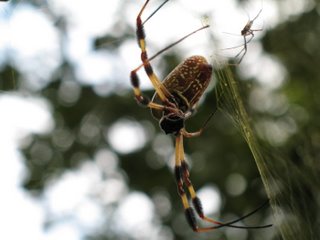 ? And who told you that wearing loose clothing was a good idea?! If you feel it crawling along your stomach inside your shirt, do you dare hit it and thereby almost surely surpass whatever tolerance it has left for your violent activities? I wouldn’t hit it, but that shirt would come off the quickest possible way! But we may rest easy, this spider, the banana spider, does not seem to be aggressive, at least not the ones I know. Encounters like this, however, may explain why a lot of people do not like to be outdoors these days of video games and football games and Internet action. Those indoor things don’t jump on you. The big female banana spider in the picture (and her tiny male cohabiter) is resident in our yard. I run into them often on the lawn mower, but so far they don’t mind if I live here too, and next morning there is a new web for me to blunder into.
? And who told you that wearing loose clothing was a good idea?! If you feel it crawling along your stomach inside your shirt, do you dare hit it and thereby almost surely surpass whatever tolerance it has left for your violent activities? I wouldn’t hit it, but that shirt would come off the quickest possible way! But we may rest easy, this spider, the banana spider, does not seem to be aggressive, at least not the ones I know. Encounters like this, however, may explain why a lot of people do not like to be outdoors these days of video games and football games and Internet action. Those indoor things don’t jump on you. The big female banana spider in the picture (and her tiny male cohabiter) is resident in our yard. I run into them often on the lawn mower, but so far they don’t mind if I live here too, and next morning there is a new web for me to blunder into.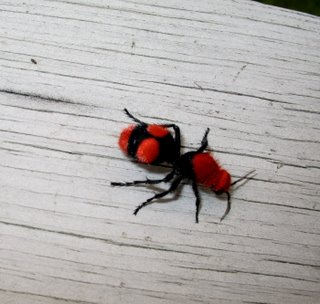
 unning at a good clip along the hand rail of the walkway to the river. Normally, I would try to stop the action long enough to take a good picture, but not this time and not this animal. That’s why the picture is a little unfocused.
unning at a good clip along the hand rail of the walkway to the river. Normally, I would try to stop the action long enough to take a good picture, but not this time and not this animal. That’s why the picture is a little unfocused. Most southern gardners are familiar with the American beautyberry, or French mulberry. It is a native plant that has considerable wildlife value. Several kinds of birds combine to clean every fruit from our plants every year. The purple variety seems to be the more common one in local gardens, but thanks to Bill Fontenot, we have a white-fruited variety. The plant is not as vigorous as the purple one, but this year the rain seems to have encouraged a nice display of white fruit, worthy of a picture. I have had a lot of trouble taking good pictures of very white things. The desired image is usually indistinct and overexposed. Th
Most southern gardners are familiar with the American beautyberry, or French mulberry. It is a native plant that has considerable wildlife value. Several kinds of birds combine to clean every fruit from our plants every year. The purple variety seems to be the more common one in local gardens, but thanks to Bill Fontenot, we have a white-fruited variety. The plant is not as vigorous as the purple one, but this year the rain seems to have encouraged a nice display of white fruit, worthy of a picture. I have had a lot of trouble taking good pictures of very white things. The desired image is usually indistinct and overexposed. Th is time the pictures are worth sharing, I think.
is time the pictures are worth sharing, I think. Lastly, the pea-like flowers of this vine are pretty, but man is this plant a big problem. It is our version of kudzu. It covers everything. I heard some talk about it last summer but it wasn’t very noticeable here at that time. Well, now it is a pest, unless you like to think of your whole yard as being just a substrate for this vine to climb on. But admit it, the flowers are pretty.
Lastly, the pea-like flowers of this vine are pretty, but man is this plant a big problem. It is our version of kudzu. It covers everything. I heard some talk about it last summer but it wasn’t very noticeable here at that time. Well, now it is a pest, unless you like to think of your whole yard as being just a substrate for this vine to climb on. But admit it, the flowers are pretty.


